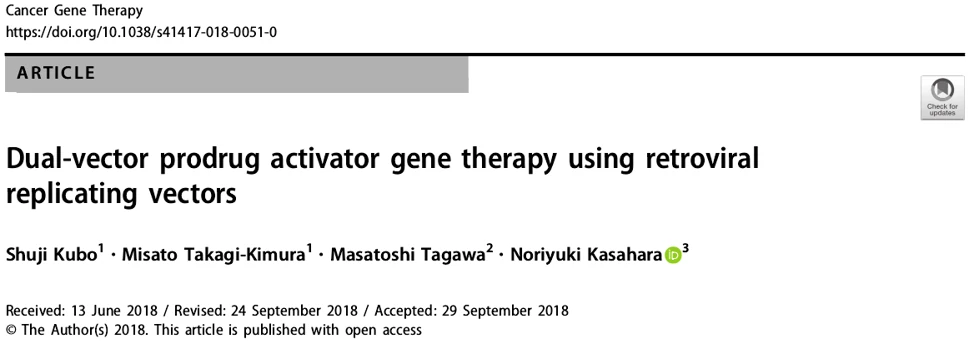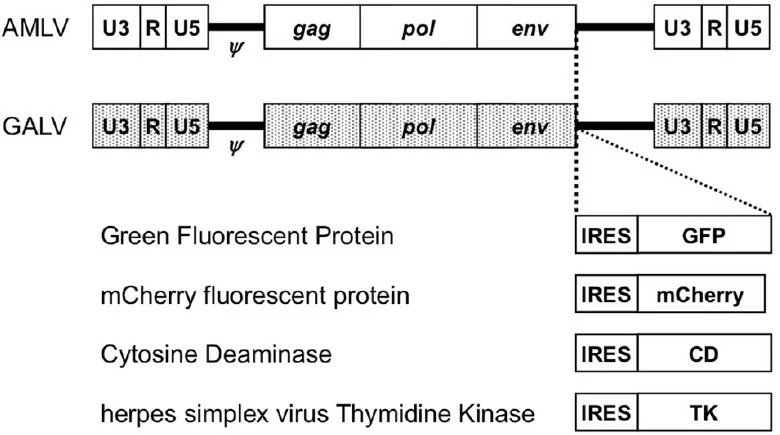Cancer gene therapy:
Dual-vector prodrug activator gene therapy displays synergistic cytocidal effects on cancer
Introduction:Retroviral replicating vectors (RRVs) has been proved as an excellent gene therapy vector to achieve efficient gene transduction. To date, more than 499 clinical trials have been carried out using lentivirus vectors for gene delivery and promising gene therapy outcomes have been achieved in a variety of diseases, mostly in cancer. Today, a dual-vector prodrug activator gene therapy has been designed by one research team at the University of Miami to use two different RRVs carrying different prodrug activator genes, which displays synergistic cytocidal effects on different cancer models and indicates the potential utility of dual-vector gene therapy in the future.
On September 29th, the result was published in the journal Cancer Gene Therapy by " Dual-vector prodrug activator gene therapy using retroviral replicating vectors". The study reveals a possible combinatorial effect of prodrug activator genes delivered by two different RRVs derived from amphotropic murine leukemia virus (AMLV) and gibbon ape leukemia virus (GALV) on human hepatocellular carcinoma Hep3B cells. “We are outfitting a virus with a suicide gene,” said Kasahara, a Sylvester member. “It forces cancer cells to make an enzyme that converts a non-toxic compound into an active cancer drug, generating that drug right inside the cancer cell itself.”

Schematic structures of the RRVs. The vectors contain a full-length replication-competent AMLV or GALV provirus, in which an IRES-transgene cassette has been inserted between the env gene and the 3-untranslated region. ψ: packaging signal; gag-pol: AMLV or GALV structural genes; IRES: internal ribosome entry site. Yeast cytosine deaminase (CD), can convert the prodrug 5-fluorocytosine (5FC) to toxic metabolite 5-fluorouracil, which may efficiently kill a wide variety of cancer cells in vitro and in vivo following 5FC administration, while herpes simplex virus thymidine kinase (TK) is used as a “suicide gene”, allowing cells with this gene to be killed following ganciclovir administration. RRVs, individually carrying the prodrug activator genes CD and TK alone or in combination, can infect cancer cell and show cytotoxic effects in the presence of the respective prodrugs, 5-fluorocytosine and ganciclovir. Specifically, in this study, scientists first carefully designed RRVs, which individually possessed the prodrug activator genes yeast cytosine deaminase (CD) and herpes simplex virus thymidine kinase (TK) alone or in combination. Then they infect cancer cells with the designed viruses, finding that all combinations of the two prodrug activator genes produced synergistic cytocidal effects, but the combined effects of the different genes were significantly greater than those of the same genes when delivered by two different vectors.
References
Vectors used in gene therapy clinical trials. The Journal of Gene Medicine Online Library.
[Online] Updated Nov 2017. http://www.abedia.com/wiley/vectors.php
Dual-vector prodrug activator gene therapy using retroviral replicating vectors






